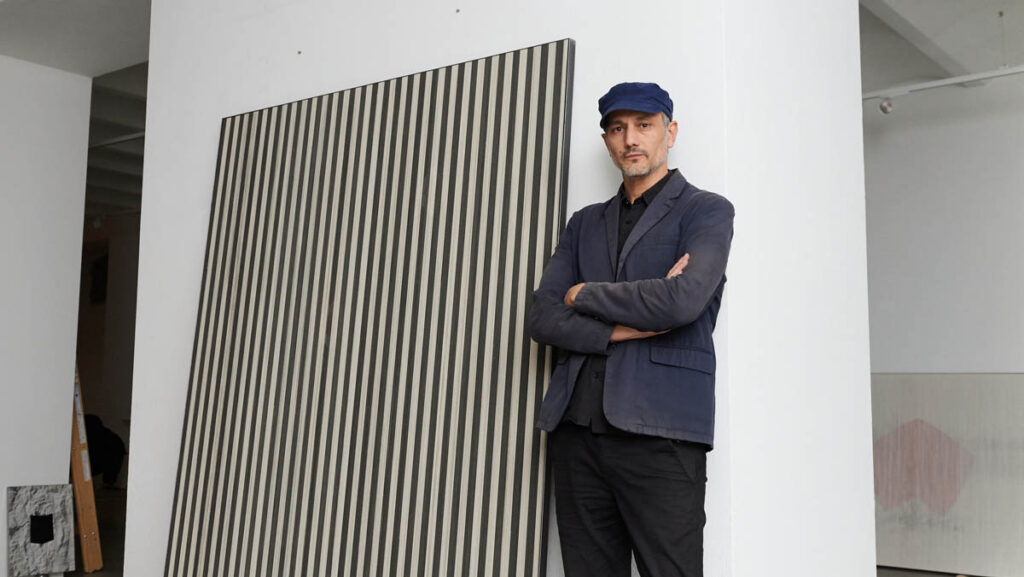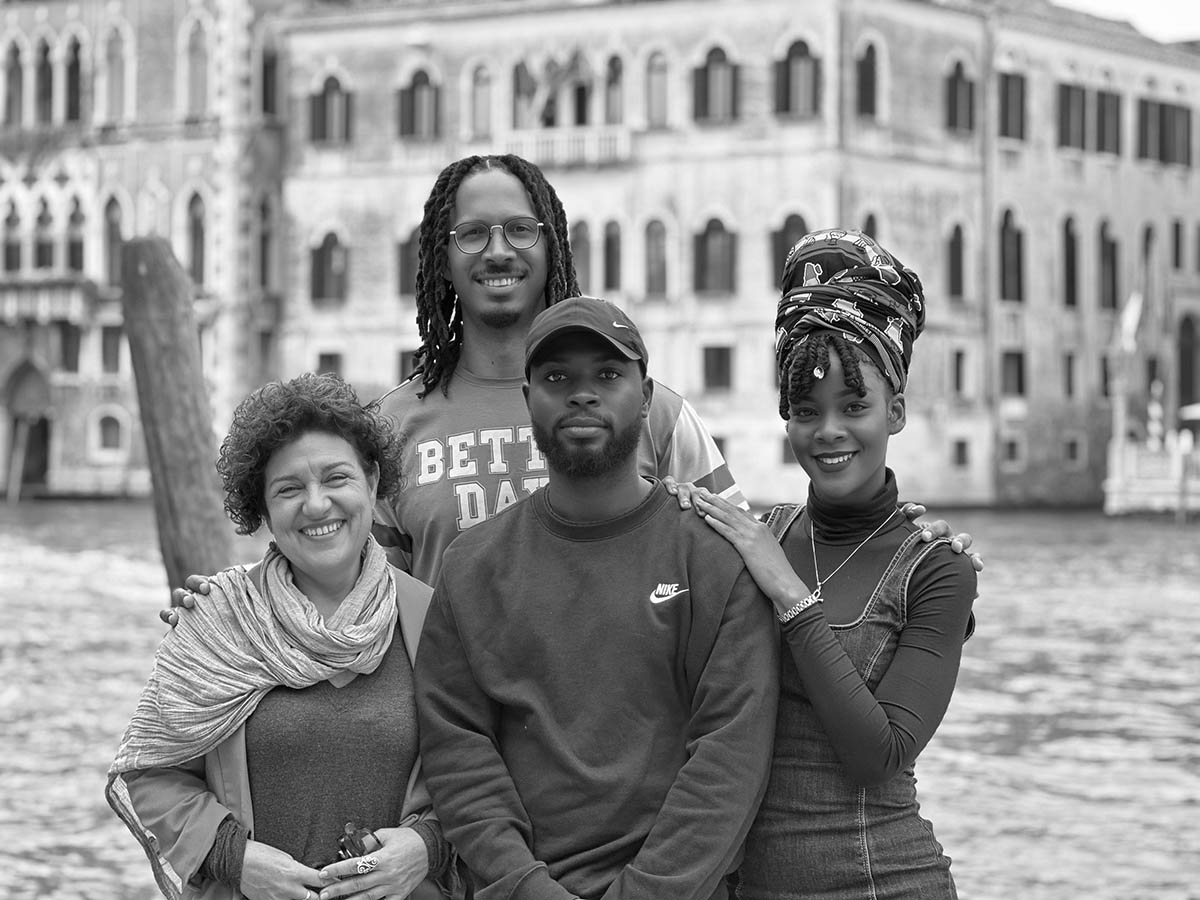
Erka Shalari: Dear Paola, I would like to start it with you. I find the exhibition extremely powerful, I especially like how it engages with the deconstruction of Western modernity, creating space for the diverse languages of contemporary art and pursuing a vision that embraces indisputably the whole world. Could you briefly explain your research themes and how you arrived at the selected artistic positions?
Paola Lavra: My membership in the research network “Worlds of Coloniality and TransModernities” formed in 2014 under the name of Caribbean and Transatlantic Worlds in Movement (MCTM), has allowed me to focus on the experience of slavery and colonization from the transatlantic spaces that have until now occupied a minor place in historiography, while they have been the place where the West exercises its supremacy. It is about understanding the conditions of production of subalternity and the social and environmental issues that this production generates in contemporary worlds. My work on gender violence in a postcolonial context and on the racialization of social relations allows me to establish a theoretical framework for my research.
However, it is the artistic gesture that allows us to grasp the strategies of revolt and resistance that are put in place at the heart of these same spaces in sometimes extremely poetic forms that act through the finesse of the gaze against any form of dispossession of the subjectivity that is specific to them. The three artists, while belonging to three distinct geographical spaces, are driven by the same approach of deconstruction of the path traced by colonial history to which they oppose their own reading of reality and their imaginations nourished by dreams and hope. There is nothing hidden: everything is readable. Noutoupatou is an expression in the Creole language that means “we are everywhere”. We, the children, we the migrants, we the Caribbeans, we the artists. Creole subjectivities in the making.
ESH: The exhibition text presents the show as an invitation for visitors to explore the historical, sociological, and cultural influences that leave indelible marks on spaces and bodies. It delves into the plural and often conflicting identities of a colonial society perpetually questioning its origins.
Paola Lavra: Yes, in a space and body deprived of speech and belonging, identities are blurred and always subject to doubt. In discussing the lasting effects of slavery, writer Christina Sharpe refers to the many ways in which people grieve, resist, and create for healing and change, even in the face of ongoing struggles against all economic and environmental oppression and displacement (Sharpe, 2016).
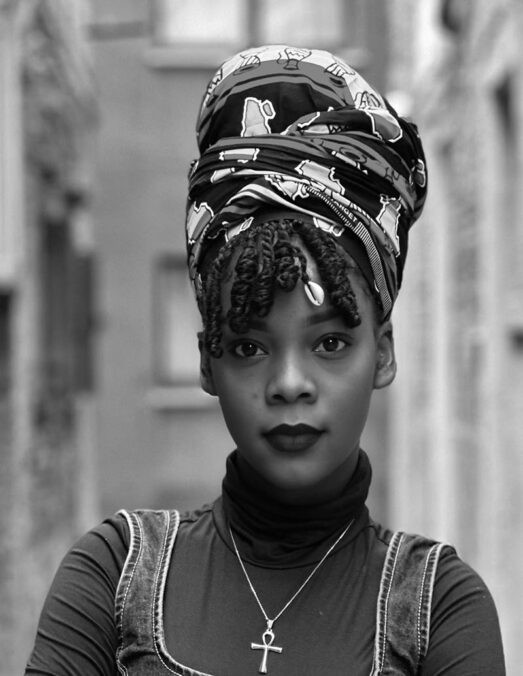
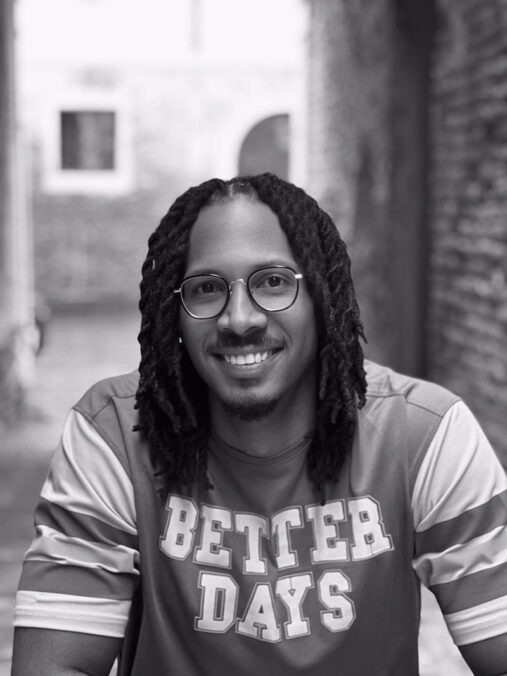
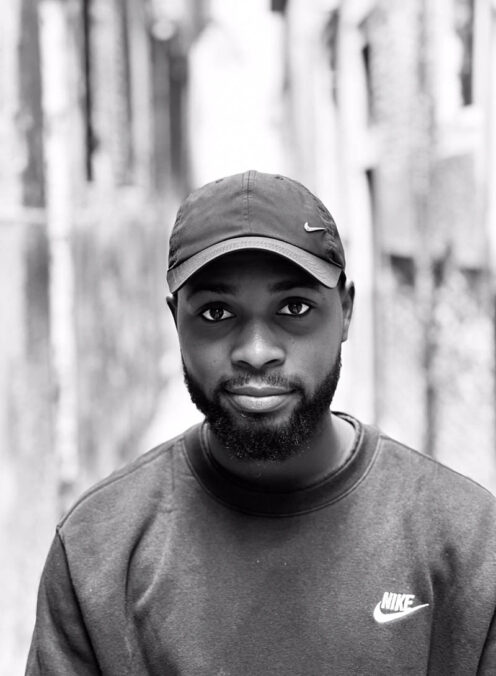
ESH: Now, turning to the artists, I’d love to begin with a question about your journey at the Caribbean Campus of Arts. What drew you to the CCA, and how has your experience there influenced you both personally and artistically?
Flavio Delice: For my part, leaving Guyana to study in Fort-de-France was a real revelation. Not only did I deepen my artistic techniques, but I also discovered an incredible cultural wealth. Exchanges with my comrades from across the Caribbean allowed me to enrich my vision of art and to develop a unique artistic identity, deeply anchored in my Haitian roots. I particularly remember these classes where the teachers, originally from Saint-Martin, Guadeloupe or Martinique, shared with us their knowledge of the different cultures of the Caribbean. Their songs and stories about Haiti particularly resonated with me. It was as if these teachers, through their own experiences, intuitively understood what I wanted to express through my art. I am convinced that I would not have found this same connection, this same feeling anywhere other than within this Caribbean community.
Samuel Gelas: I graduated from the Ecole Nationale Supérieure d’Art de Paris-Cergy in 2010 (DNAP), then from the Caribbean Campus of Arts in Martinique in 2024, i.e. 14 years later following a professional career punctuated by group exhibitions and personal in Paris, the United States and Africa. At the Beaux-Arts in Cergy I received training very focused on Western art in terms of reference and plastic approach. This allowed me to acquire a certain amount of knowledge about the history of art and to experiment with various mediums, particularly painting. Throughout my career, I felt that I was missing a dimension in my work closer to myself, my origins and my own history. It’s about the Caribbean dimension that inhabits me, and the African part of my origins. I, therefore, undertook investigative work by first going to meet my elder artists in order to learn from them and draw up an overview of the visual arts in the Antilles and the Caribbean. This through a platform, a media that I called MédiArt by Samuel GELAS. It is as an extension and continuity of this approach that I decided to join the Caribbean Campus of Arts in Martinique to connect to this Caribbean dimension that I was missing through meetings, exchanges and teaching that this school gave me.
Shamika Germain: The experience at the Caribbean Arts Campus was great in terms of learning and opportunities, and we were lucky enough to have great workshops at our disposal. There are down moments because I’ve been away from my family for 5 years but it’s made me grow. And today I’m lucky enough to be in Venice for a great exhibition in a magnificent gallery, accompanied by talented artists.
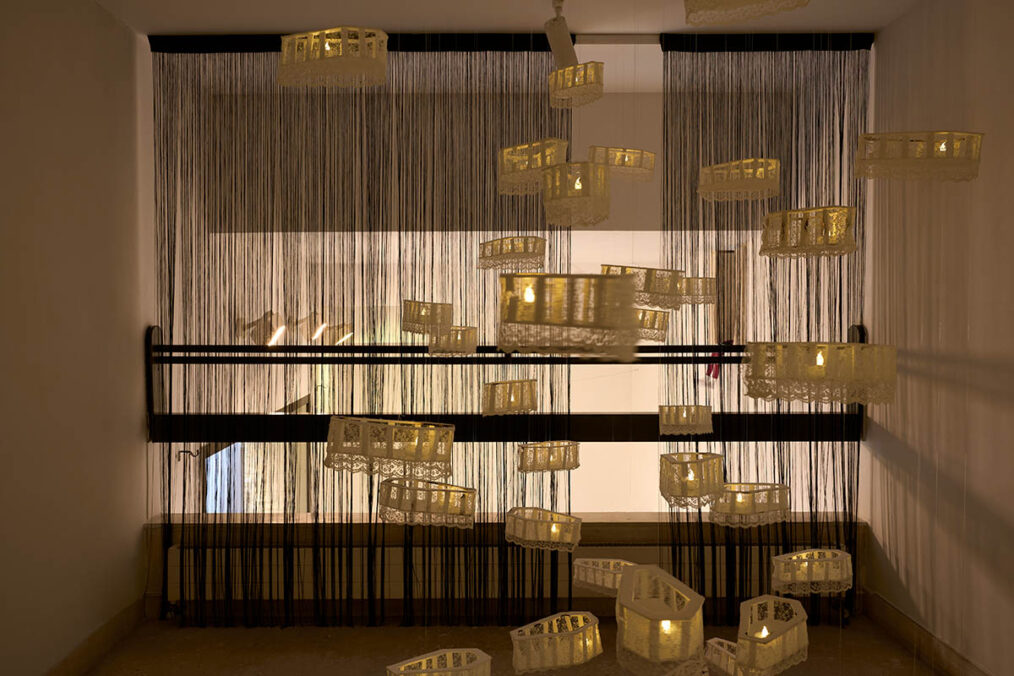
ESH: The works have autobiographical solid traits. I would like to start with you, Flavio, and with the endless migration that has taken Haitians to other shores.
Flavio Delice: I would say that there is indeed a strong correlation between my personal history and the themes that I address in my works. Migration, exile, the quest for identity, the construction of a self from fragments of stories and memories; so many subjects that are dear to me, coming from a Haitian family who grew up listening the stories of his elders who traveled the world in search of a “paradise”, a form of peace. These stories shaped my imagination and made me want to explore my buried and scattered roots like branches that are scattered in this vast world, just like the stars that travel across this vast sky. I also felt the need to build my own identity by reappropriating certain elements from my childhood, neighborhood, my family in exile and my culture that seemed important to me. I have always been curious to know the history of my country, to understand the reasons which pushed my friends to leave Haiti. I also experienced discrimination in Guyana and Martinique, which reinforced my desire to defend my origins and promote my culture. These experiences also opened my eyes to the reality of the migrant.
However, it is important to note that art is a process of transformation. What I represent in my works is not a simple reproduction of my reality, but rather a personal and subjective interpretation. I take elements of my story, my emotions, my observations, and I transform them into images, symbols, stories. My art is a way to find myself, to give meaning to my existence, and to share a part of myself with others. It is also a tribute to my family, my friends and to all those who crossed the forests, oceans, deserts, and mountains to build a new life. A way for me to bear witness to the strength and resilience of the Haitian people, despite the trials they have gone through. By creating works on this theme, I hope to provoke reflection, empathy and dialogue around this crucial issue.
ESH: What about the concept of „débroillardise“ in your work – a term that Paola Larva uses in her critical text? Can you describe in more detail how you approach materials?
Flavio Delice: The concept of resourcefulness perfectly sums up my way of approaching materials. I have always been fascinated by the history that each object carries within it, by the traces of time and the uses it has undergone. It’s as if each object was a character with whom I had to enter into dialogue. Sometimes it takes me time. My first experiences with objects date back to my childhood in the Haitian neighborhood. In my bedroom, which was also the famous hallway that led to the kitchen, I created a whole universe from found objects with my little brother, thus transforming my environment into a space for play and imagination. My parents were not wealthy and I also wanted to live like the other families I saw on television (when it worked). So, I sometimes managed to have a desk, a cupboard, shelves and all that with a few boards and collected objects. It was sometimes used to decorate this corridor which served as my and my little brother’s bedroom.
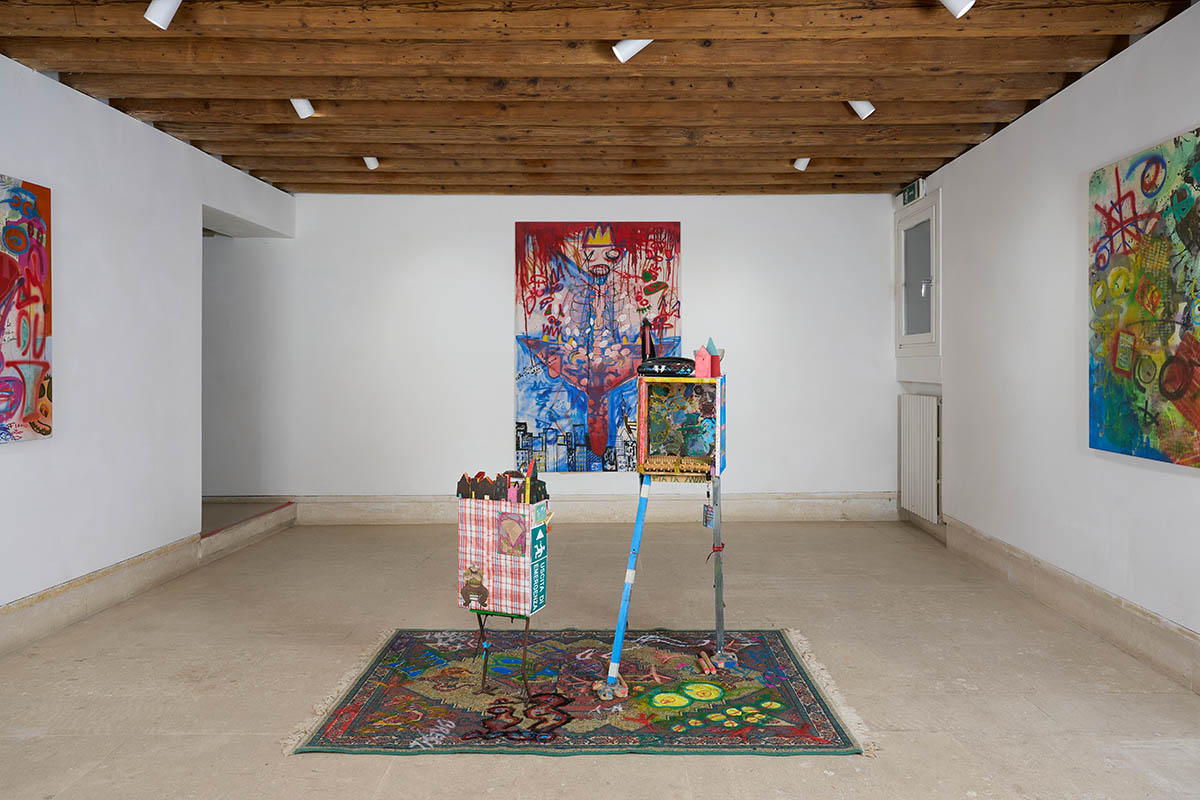
This habit of recovering and transforming objects has remained with me and is part of my artistic practice.
Today, the choice of materials is, for me, an essential step in creation. I not only select materials for their aesthetic qualities, but also for their history, their provenance and the emotions they evoke. For example, an old suitcase takes me back to my childhood memories, to my dreams of travel and to the curiosity that motivated me to search this one of my parents when their backs were turned or this one of my cousins and friends who passed by, the house. Why was I going through their suitcases? Because I was constantly looking for my country (Haiti) among their clothes, administrative documents…Attracted by objects which have a history, which bear the marks of time and use, allow me to create works which are both personal and universal, which evoke memories and shared emotions. Ingenuity is also the ability to find new uses for everyday objects. It is this approach that allows me to give a second life to objects and to create unique and original works. In short, the choice of materials is for me a way of telling a story, sharing an experience and bringing my imagination to life.
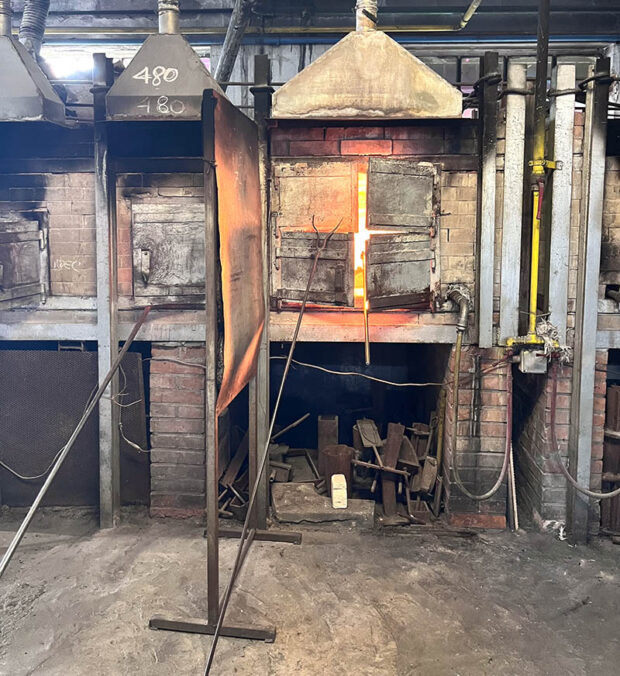
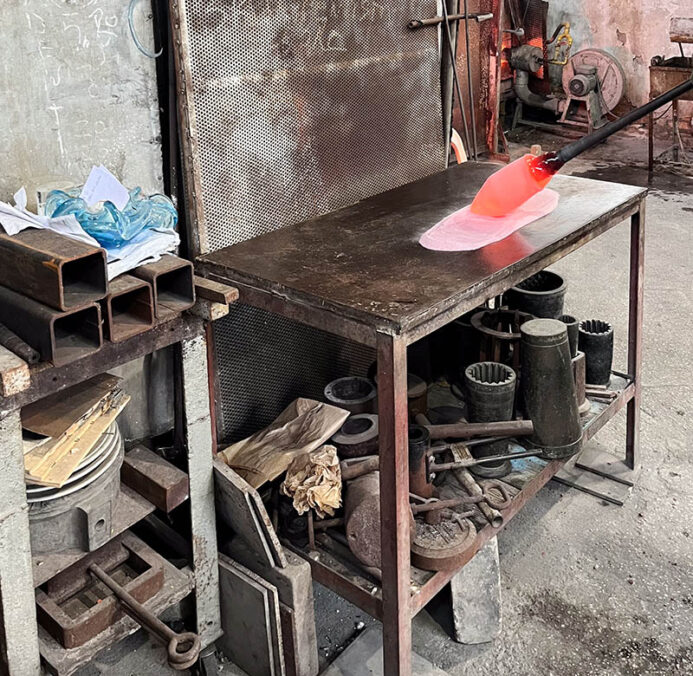
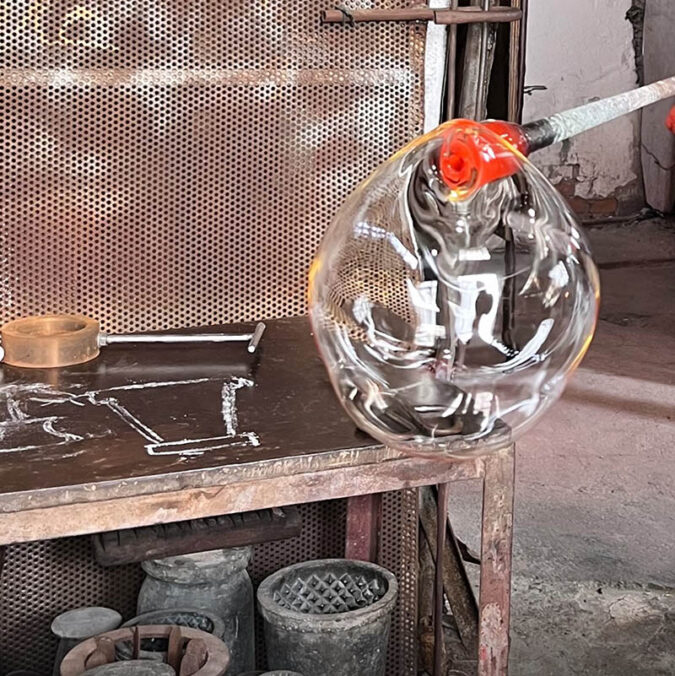
ESH: Shamika, you explore in your work the aesthetics of trauma, personal and collective ones. Through you, I got to read about Enfants de la Ddass. Can you tell more about your work?
Shamika Germain: In my work, children from social services hold a central place. My personal history, marked by time spent in foster care and the absence of a stable family structure, profoundly influences each of my pieces. Through immersive installations like We are here, I give voice to these often invisible young lives, expressing their struggles, broken hopes, and daily battles to find their place in a sometimes indifferent world. The “little lost souls” represented in the cradles symbolize lives marked by separation, solitude, and misunderstanding. My art seeks to make the experiences of these children palpable, reflecting the constraints imposed by systems that struggle to fully protect them. I work with mediums that are both tough and delicate, expressing the tension between resilience and vulnerability, reminding viewers of the inner strength these young people carry despite their hardships. Through my works, I aim to raise awareness about the realities these children face, creating a space where viewers can feel the imprint of lives shaped by a journey that echoes my own.
ESH: Samuel, when I look at your works, I get the impression that your canvases are always densely populated. It seems you are particularly interested in the role of individuals within groups and their unique identities. Could you share more about your compositions?
Samuel Gelas: I am interested in the human condition, in particular those of people of African descent through issues of social injustice, racial violence such as police violence among others, the Chlordecone scandal and migration. I observe and analyze the media and societal phenomena of daily life through paintings that are playful, poetic and critical of the world.
My portrait galleries are often tributes to discriminated people, but they also allow me to browse the series of class portraits bringing together people of different origins, cultures, social classes and religions in a common space favourable to the relationship, thus creating wealth and a new identity.
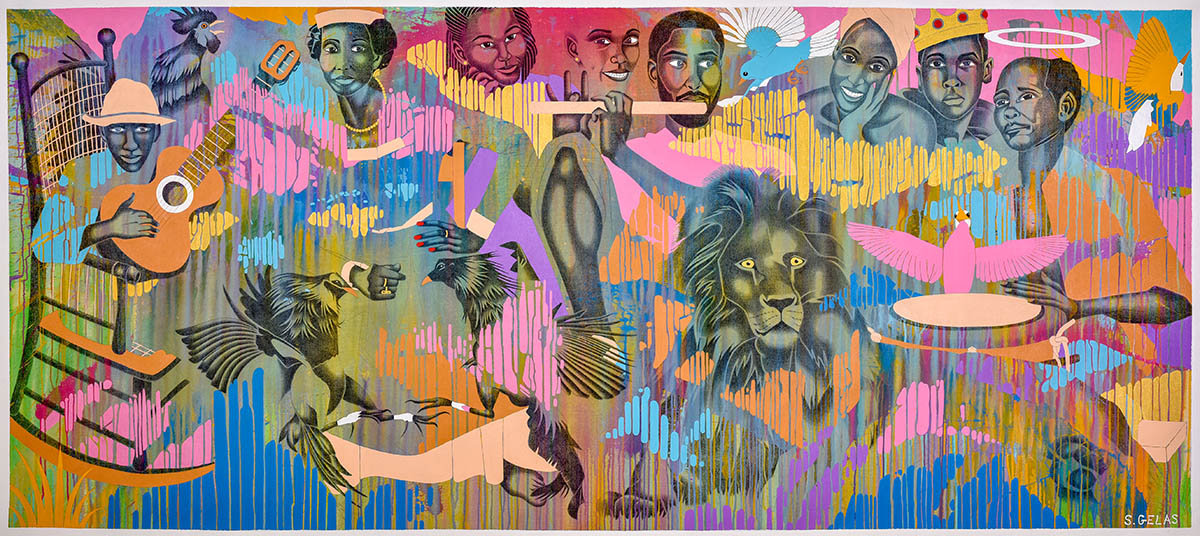
How has been the residency program in Venice and how the city has felt to you? It is very nice you happened to be here during the closing months of the 60th Biennale.
Flavio Delice: Venice was a real revelation. Every corner of this city, from the canals to the palaces to the works of art exhibited at the Biennale, was an inexhaustible source of inspiration. I was particularly touched by the installations which transformed the spaces into true works of art. These experiences made me want to create work that is meaningful and resonates with others. I also had the chance to meet extraordinary people: artists from varied worlds, passionate curators and endearing residents. These exchanges, often initiated in the bars, which for me were the beating heart of the city, enriched me and opened my eyes to new artistic perspectives, whether musical or cinematographic. The Biennale was a bit like a big family of artists, a place where passions and ideas were shared. I have a special memory of my visit to the Arsenal, where I discovered the works of Pacita Abad. Her personal approach to migration, through bright colors and expressive shapes, touched me deeply and made me want to integrate his paintings into my own artistic practice. It’s as if she had put words, shapes and colors to the feelings I carried within me. Other artists present during this adventure also had this particular energy which attracted me so much to Pacita Abad.
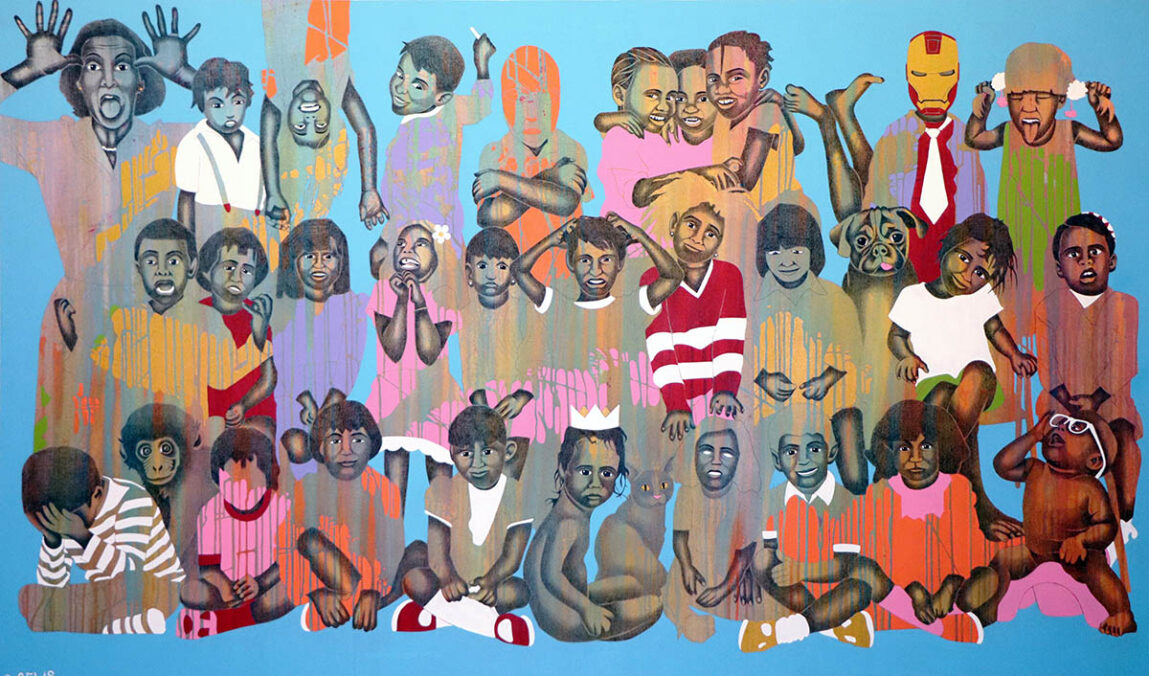
Samel Gelas: I did very well during my residency. Venice is a magnificent and atypical place located on the water dependent on each “island” by bridges. This makes me think of the archipelago in the Antilles, that is to say a set of islands arranged in a group, which in fact forms a geographical unit as well as all the philosophy that accompanies it such as the notions of creolization and relationship of Edouard Glissant possible thanks to the bridges which depend on them. What struck me most in the biennial, beyond the works of great quality and especially in the Off, is the way in which the spaces were taken over, particularly the cathedrals and churches. Which I hadn’t yet seen elsewhere. This demonstrates the “Sacred” dimension and the consideration given to art in Venice. Indeed, this experience and these discoveries are inspiring and stimulating.
Shamika Germain: I was profoundly moved by this year’s general theme, „Stranger Everywhere.“ The German pavilion’s total immersion experience especially resonated with me, as it reminded me of the kind of immersive depth I aim to achieve in my own work. Venice itself has been a revelation; I’ve completely fallen in love with the city—its weathered walls, its vibrant energy, and the remarkable way art is woven into daily life here. The residency is wonderfully organized, providing optimal working conditions that truly foster creativity and inspiration.
In the coming weeks, there will be a master class with the artist Julien Creuzet. Why did you, Paola, choose him to come?
Paola Lavra: Julien Creuzet’s master class is addressed to all students from the Lycée Victor Anicet in Martinique, to students from the Caen School of Art and to our three artists from the Caribbean Campus of Arts, symbolic places and founders of Julien’s brilliant career. This is a close collaboration between the CCA and the Institut français, led by the director of our Galerie École, May Clementé.
Julien Creuzet is for us an example and a model when he is able, thanks to the poetic power of words and gesture, to make Attila and his source travel, to bring us back to the source.
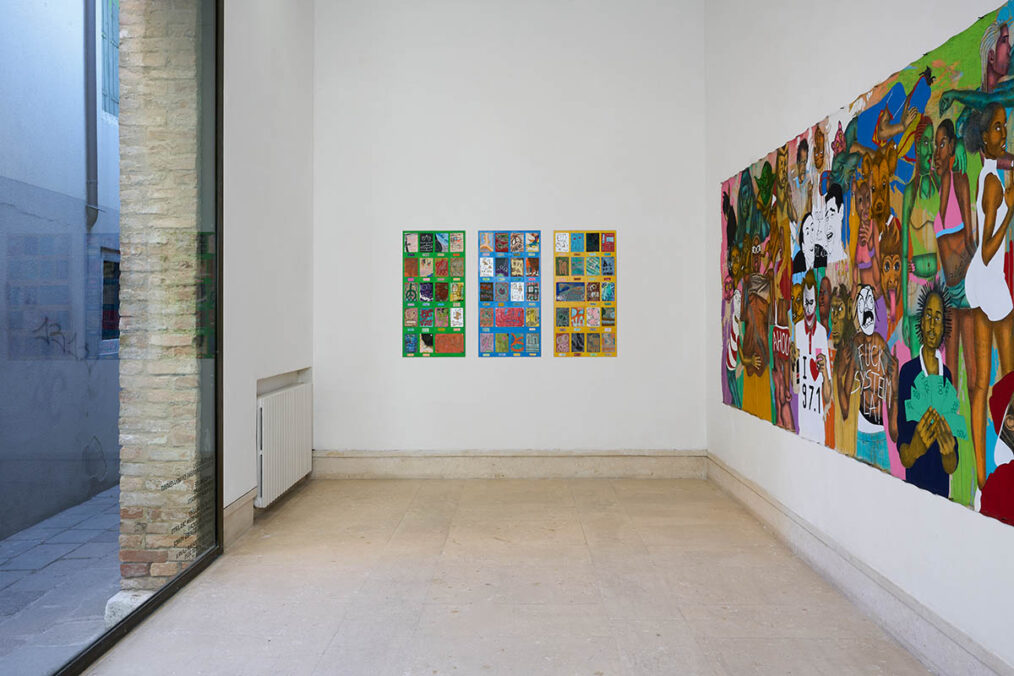
Can you give us an imaginary tour of the gallery space? What was important for you when thinking about the relationship of artworks in space?
Paola Lavra: The AplusA Gallery is located in the middle of four small paths (calli) that intersect at a specific location: it is a symbolically strong space in Creole societies. What is interesting is that all those who cross the city find themselves by choice or by chance in front of the large bay window of the Gallery which offers the first elements that reveal the work of the three artists. Then, each artist settles into a space that belongs to them to tell their story. The space must thus be read as a narration. One artist, in particular, voluntarily occupies interstitial and immersive spaces. The rest is to be discovered!
Exhibition: Mondes Caribéens en Mouvement. With: Flavio Delice, Samuel Gelas, Shamika Germain
Curated by: Paola Lavra
Exhibition duration: 18.11.2024 – 18.1.2025
Address and contact:
A Plus A Gallery
Calle Malipiero 3073, 30124 Venice
www.aplusa.it
Shamika Germain, born December 19 in Saint Martin, was placed in foster care at three months old, remaining there until age 21. This experience deeply influenced her artistic journey. At 19, she joined the Caribbean Arts Campus in Martinique, where she earned her DNA with honors and a perfect score of 20/20, followed by her DNSEP with the same distinction. Shamika’s work draws from her own story to explore the painful realities of children in social welfare systems in the Caribbean. Her work addresses abuse in foster care and the impact of maternal absence. Her “crib-coffin” concept honors young lives lost and invites viewers to confront these painful experiences. Using materials like rebar and wool, she juxtaposes strength and fragility, prompting reflection on trauma and resilience embedded within these environments. www.instagram.com/shamikaermaine/
A graduate of ENSA Paris-Cergy (2010), Samuel Gelas was presented at the Salon de Montrouge (2011). He completed a first residency at the Cité Internationale des Arts (2014-2016) and was awarded in 2018 the Visual Arts Commissions of the Cité Internationale des Arts, where he is currently in residence. His work has been presented in personal exhibitions at the Corridor de la Cité Internationale des Arts (2019), at the Fonds Départemental d’Art Contemporain de Guadeloupe (2018), at the Conservatoire des Arts in Montigny-le-Bretonneux (2017), at the LJ gallery (2016), in Paris. He has participated in group exhibitions at the Villa Radet, at the Cité Internationale des Arts – Montmartre site (2019), at the Little Haïti Cultural Center in Miami (2019), at the Espace d’art 24 Beaubourg (2019), at the Clément Foundation in Martinique (2018), at the Nathalie Obadia gallery (2015), at the LJ gallery (2015). He is one of the winners of the 15th Biennale of Contemporary African Art in Dakar (2024) – www.samuel-gelas.com, www.instagram.com/samuel.gelas_art/
Born in 2001 in Saint-Laurent-du-Maroni, French Guiana, to Haitian parents, Flavio Delice grew up and completed his entire schooling in the “Sables Blancs neighborhoods”. In 2018, he obtained a baccalaureate in literature with an arts option from Lumina-Sophie High School in Saint-Laurent-du-Maroni. Wishing to connect more deeply with his Caribbean roots, he joined the Caribbean Arts Campus in Fort-de-France where he earned his National Diploma in Arts (DNA) in 2022, with honors. The following year, selected by the CCA, he completed a semester at the École nationale supérieure des arts décoratifs (ENSAD) in Paris as part of a partnership agreement. In 2024, he obtained his National Higher Diploma in Visual Arts (DNSEP) with honors from the CCA. During his five years of study, he participated in three group exhibitions organized by the CCA: – in 2023 „Être né(e) quelque part“ at Trois Fleuves, Cayenne (French Guiana), – in 2022 „Être né(e) quelque part“ at the Galerie école, Fort-de-France (Martinique) and – 2024 “Pigmentes d’avenir“ at Tropiques Atrium Scène nationale, Fort-de-France (Martinique). Today, Flavio Delice is the youngest artist selected for the „Noutoupatou“ exhibition at the AplusA gallery in Venice. This artist residency in Venice marks a new milestone in his career, allowing him to fully dedicate himself to his artistic practice. www.instagram.com/a_flavio31, flaviodelicedesir.wordpress.com
Paola Lavra holds a Doctorate in Letters from the University of Cagliari (Italy), a D.E.A. in Anthropology and Ethnology from the EHESS – Paris (under the direction of N. Belmont), and a PhD in Anthropology/specialization Archaeology, Ethnology, Prehistory (under the direction of J.L. Bonniol). Qualified as a Lecturer in 2014, her activity as an anthropologist is divided between research in Social Sciences within the MCTM-LC2S-CNRS research group (Caribbean Laboratory of Social Sciences, FDF) and teaching and research initiation at the CCA (Caribbean Campus of Arts-Fort de France). Trained by the School for Curatorial Studies Venice, she brings together research and curatorial practices by supporting young artists from the CCA and promoting the professionalization and circulation of Franco-Caribbean artists. She is co-creator and curator of Agnès Brezephin’s work “Fil(s) de soi(e)”, prize winner of the 15th edition of the Dakar Biennale 2024, The wake.



